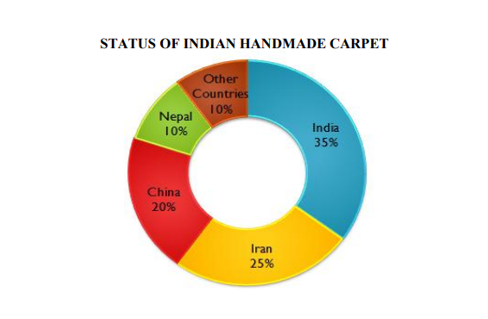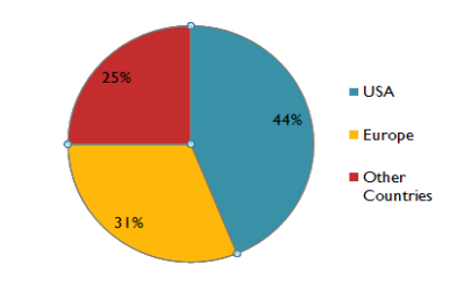The carpet industry stands as one of India’s oldest, producing four types of handwoven carpets: tufted, knotted, woven, and embroidered. India holds the top spot globally for both the quality and quantity of handwoven carpet production, with over three million workers and artisans contributing to the industry.
Over 90% of India’s carpet production is exported to various countries, making it a significant handicraft industry. However, challenges persist in the realms of raw materials, finishing, production, and environmental concerns.

India claims the leading position worldwide in handwoven carpet production statistics. In terms of both value and volume, Indian handwoven carpets hold a 35% share in the global market, surpassing Iran with 20-25%, China with approximately 20%, Nepal with around 10%, and other exporters, including Turkey, Afghanistan, and Pakistan, collectively holding a 10% share.

India’s carpet exports extend to more than 70 countries, with 44% going to the United States, 31% to Europe (Germany, France, Italy, Belgium, Spain, Denmark), and the remaining 25% distributed to other nations such as Canada, Australia, South Africa, Brazil, Netherlands, Japan, Turkey, Mexico, and New Zealand.
Challenges Faced by the Indian Handwoven Carpet Industry:
-
Raw Material Issues:
a) High costs of quality raw materials
b) Disruptions and inconsistency in product supply due to human and management issues
2. Production-related Challenges:
a) Shortage of skilled and unskilled manual worker
b) Electricity-related concerns
c) Lack of management skills
d) Dependence on traditional technology and resistance to intervention
Conclusion:
The handwoven carpet industry, while demanding, holds the potential to become a significant employer for unemployed villagers and youth. It serves as a crucial source of foreign exchange, bolstering the global economy.
The consistent growth in terms of value underscores the sustainability potential of this industry. To harness the available resources and talents, particularly among the housewives of our nation, officials must focus on improving management conditions, conducting global evaluations, and addressing the industry’s development needs.
Overcoming the industry’s challenges requires ongoing research and development, comprehensive training, and effective marketing and advertising strategies. This approach will pave the way for the continuous growth of the handwoven carpet industry in India, solidifying its position as the world’s cradle of handwoven carpet production.
Edited by: Dr Hossein Firouzi, Deputy Official in Charge of Farsh Farhan





